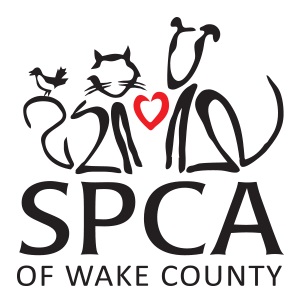
 Special to the Philanthropy Journal
Special to the Philanthropy Journal
By Ginny Larkin-Thorsen and Sarah Streeper
As a land-grant university, NC State is committed to providing students hands-on, highly-engaged learning opportunities AND to providing research that is of direct, practical use to the fields we work in. Philanthropy Journal proudly presents this series of evidence-based resource articles developed by Dr. Amanda J. Stewart‘s masters level Management of Nonprofit Organizations class. These articles represent a perfect overlap of engaged learning and practical research.
Working in the nonprofit sector is hard. Some find themselves facing violence, hopelessness, neglect, and other impossible situations as they work to serve that need. This causes burnout, whether by compassion fatigue, exhaustion, or apathy, which is why self-care is vital to the nonprofit practitioners.
 Self-care is defined by the academic world as “activities or processes that are initiated and managed by the worker for the purpose of supporting one’s health and well-being, attending to one’s needs, or providing stress relief”.[1] But, why does the nonprofit sector need to be aware of this practice and furthermore, why do they need to include it in their management practices?
Self-care is defined by the academic world as “activities or processes that are initiated and managed by the worker for the purpose of supporting one’s health and well-being, attending to one’s needs, or providing stress relief”.[1] But, why does the nonprofit sector need to be aware of this practice and furthermore, why do they need to include it in their management practices?
Benefits from Organizational Self-Care
- Healthier staff leads to a healthier workplace
- Healthier workplace increases morale and energy for mission
- Increased morale increases staff motivation
- Decreased burnout and staff turnover
- Shows investment in staff and their well-being
We reached out to a local nonprofit, the SPCA of Wake County, which deals with a variety of high stress and emotional situations to learn about their self-care practices. Lisa Kroll has spent thirteen of her twenty-two years as Director of Operations at the SPCA and knows the personal and organizational stress that can arise from their work. For personal self-care, Kroll mentioned that, while sometimes difficult, she has implemented her own work-personal life boundary to separate the two. This stressed the importance of having things one enjoys outside of work. However, Kroll mainly credits the organization with instilling safe-guards that help maintain self-care in the workplace. She emphasized that without a supportive executive these practices would not be successful. As we spoke with Kroll, she delved into the organizational self-care practices that she has used for her staff:
- Individual check-ins with staff completed by managers;
- Clear communication and transparency between animal center staff and office staff;
- Notification of euthanasia decisions to all staff;
- Open-door communication regarding health and euthanasia decisions.
These approaches provide organizational outlets for staff that may need help processing certain events or feelings. Kroll credits the support of staff and her superiors for her continued commitment to the SPCA, as well as progression being made by the organization. “It makes it more interesting rather than frustrating to me…we’re doing more, we’re not stagnant…I’m reminded constantly of how lucky I am to do something that I believe in.”
Kroll also spoke to the importance of staff and volunteers understanding the mission and focus on the SPCA, something she considers when hiring. “We need to make sure people understand what no-kill means. The SPCA is a managed-admission, no-kill organization that takes in over 3,200 animals a year. While the SPCA does not euthanize animals due to time or space, the organization does perform humane euthanasia when needed for animals in the SPCA’s care who have untreatable medical conditions and in rare cases behavioral issues that are not reparable. Your staff has to be on the same page from the get-go, if not you end up with more difficult cases being extremely more difficult.” Part of self-care can be as simple as knowing that your staff understands the work and the effort of the organization to fulfill its mission. In all nonprofit organizations, it is important that staff comprehends the entirety of the mission and the path towards achieving it. Kroll stated that the nonprofit sector and its focus is not a “one size fits all…make sure you’re/they’re really committed to the particular mission…make sure you’re really into it. That’s the part that makes me come back.”
When working for a nonprofit, it is difficult to turn off the emotions and feelings one has experienced during the day, which is why self-care is so important. “Nonprofit employees care…they want to work for an organization whose mission they believe in and where they feel the work they do directly contributes to advancing the organization’s mission.[2]”. The consumption of the mission and the frustration about the pace of progress is an easy trap for nonprofit employees to fall into leaving them with a broken spirit and disconnected from an organization they once loved. It is crucial to be part of an organization that not only understands that one cannot change the world in one day, but that their employees will struggle with that obstacle.
Self-care is not a fad sweeping the nation, but a theory that has the ability to increase the endurance of nonprofit practitioners. Everyone grows tired from work, but the emotional toll that can be experienced in nonprofits can be overwhelming and even push one to leave the sector. Implementing organizational and individual self-care practices into nonprofit organizations provide an environment that is supportive and motivated, and that takes the time to process and reinvigorate after difficult situations. Ultimately, self-care is a valuable and necessary part of the nonprofit sector and has the ability to create organizations that are more determined and more successful in serving the wider world.
[1] Lee and Miller 2013; Newell and Nelson-Gardell 2014 as cited by Bressi, S.K. & Vaden, E.R. Clin Soc Work J (2017) 45: 33. doi:10.1007
[2]Opportunity Knocks (website); Engaging the Nonprofit Workforce: Mission, Management and Emotion; 2011.
Ginny Larkin-Thorsen is a second year Masters of Public Administration student at NC State University and plans to enter the nonprofit sector upon her graduation.
Sarah Streeper is a 2014 graduate of Washington and Lee University and is currently in her second year of the Masters of Public Administration program at NC State University. She is interested in pursuing a career at an animal welfare organization.




